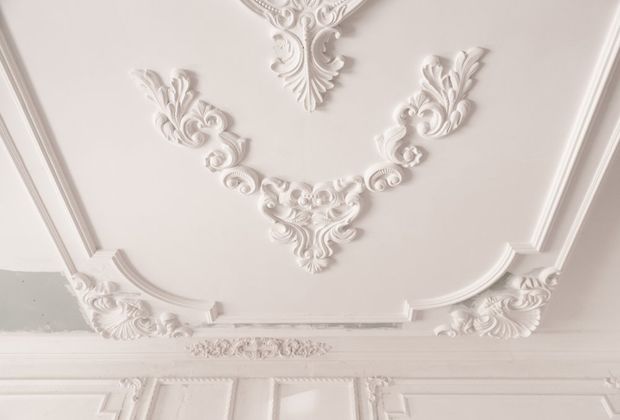
What is Plaster of Paris?
Plaster of Paris or gypsum plaster is a white substance that is made by calcining the gypsum. The plaster of Paris hardens by mixing with water. Plaster of Paris is mostly used for casting, sculpting, and gauze bandages.
Properties of Plaster of Paris
The characteristics that define the Plaster of Paris are mentioned below:
- Plaster of Paris is a white-colored powder.
- When plaster of Paris is mixed with water Crystals of gypsum are produced resulting in the formation of hard solid mass.
- If the Plaster of Paris is heated at 473K, it creates anhydrous calcium sulfate, which is also known as the dead burnt Plaster of Paris.
- Plaster of Paris is highly fire-resistant.
- It can be easily spread on a surface.
- Structures and sculptures made with Plaster of Paris do not crack for a long time.
- After setting, the Plaster of Paris expands very slightly.
- The preparation process for Plaster of Paris is exothermic.
Uses of Plaster of Paris
- Plaster of Paris is commonly used for plastering dislocated bones and fractured bones to set them in the proper place.
- Plaster of Paris is used in dentistry.
- It is used for making decorative materials and toys.
- It is used as building material by architects to make decorative designs.
- It is also used in laboratories to seal the air gaps in the apparatus and make it airtight.
- Plaster of Paris is used to make blackboard chalks.
- Many house owners use plaster of Paris design for ceilings to enhance the look.
- Plaster bandages are used to make the patient’s head and neck impression.
- Plaster of Paris designs for walls and ceilings are widely used and it is also used for making false ceilings.
- It is also used as fireproofing material in buildings, fire protection systems, and fireproofing products.
Also Read – 8 Different types of Moulding Sand
What are the types of Plaster of Paris?
There are three types of plaster of Paris that are widely used.
- Gypsum plaster
- Cement plaster
- Lime plaster
The following types of plaster of Paris are explained below:-
Gypsum Plaster
This is widely known as Plaster of Paris, Gypsum plaster is produced by heating gypsum to a temperature of 300 degrees Fahrenheit. Also, if gypsum is heated above 392 degrees Fahrenheit, it turns into anhydrite.
When water is mixed with the dry gypsum plaster powder or anhydrite, it turns into gypsum. The Plaster of Paris hardens by adding water very quickly.
Lime Plaster
The mixture of sand, calcium hydroxide and other inert fillers are known as Lime Plaster.
Limestone is heated to make quick lime and then slaked lime is produced by adding water to it. It is often called white powder or wet putty.
Cement Plaster
The mixture of suitable plaster, Portland cement, sand, and water is known as cement plaster.
Cement plaster is applied to the exteriors and interiors to obtain a smooth surface. A final layer of gypsum plaster is often added over the cement plaster.
Plaster of Paris chemical formula
Plaster of Paris chemical formula – (CaSO4)2 .H2O or Ca2H2O9S2
FAQs on Plaster of Paris
Q 1. How long does plaster of Paris take to dry?
Ans: Plaster of Paris can set in a few minutes and the mold can be removed after an hour but it takes 24-48 hours for full cure.
Q 2. What is plaster of Paris made of?
Ans: Plaster of Paris is made of Gypsum.
Q 3. Is plaster of Paris waterproof?
Ans: No, Plaster of Paris it is not waterproof.
Q 4. Where can I buy plaster from Paris?
Ans: It can be available in local hardware or paint stores or you can order plaster of Paris home depot
Also Read – Terrace Garden Design and Construction Process
